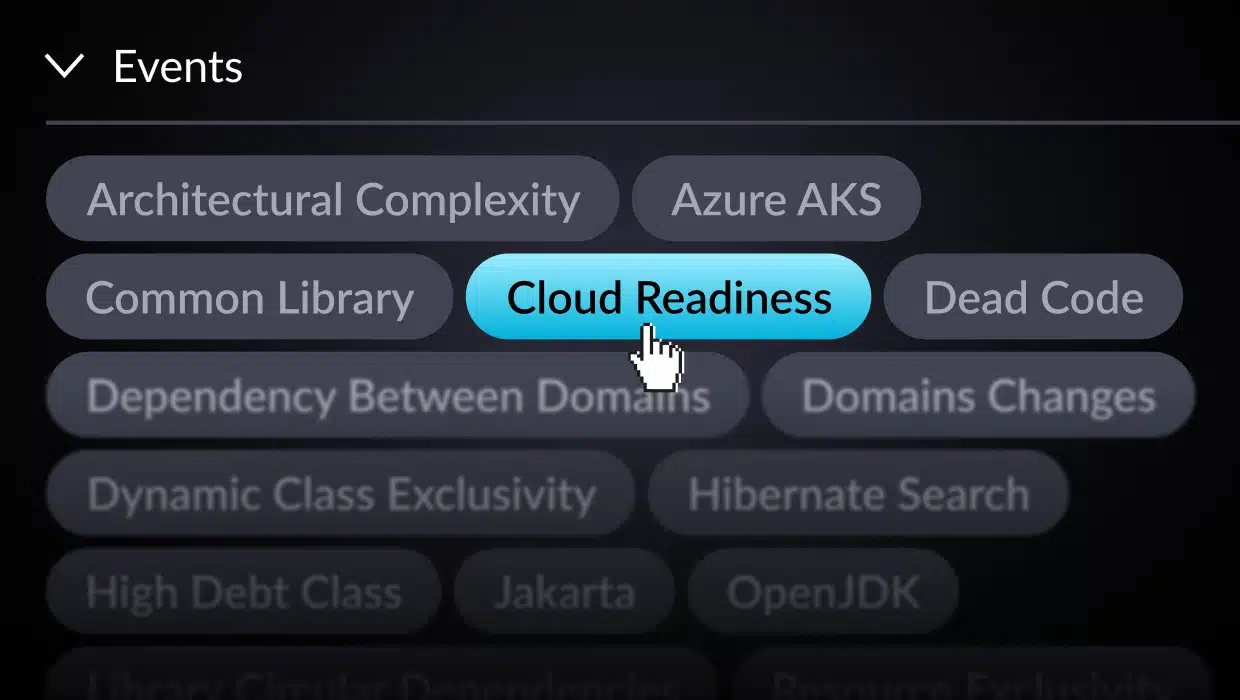The COVID-19 pandemic accelerated cloud adoption as businesses struggled to incorporate eCommerce. By 2021, for most companies, cloud application migration tools were among the top five investment areas.
Based on research by MarketsandMarkets, the global cloud migration services market was valued at $3.2 billion in 2019. In 2022, the market value is more than $9.5 billion.
Migrating digital infrastructure from a physical server to a cloud environment is complex. You can use cloud migration tools to speed up the migration and cut costs with the right platform.
Here’s a guide to cloud application migration tools.
What Are Cloud Application Migration Tools?
A cloud migration tool comprises:
- Technology facilitator
- A hardware solution
- A service, or
- A software app
These tools can clean up the current platform by moving outdated or old data to an archive. They analyze the workloads to determine the data migrating to the cloud.
They retain the data integrity and move it from legacy infrastructure to the cloud. Alternatively, technical seo tools can do so from one cloud environment.
Cloud application migration tools are available as solution suites. Cloud service providers often offer client support throughout the cloud migration process.
Related: Why Cloud Migration Is Important
What Do Cloud Application Migration Tools Do?
Cloud application migration tools help transfer data and apps between on-premise servers and the cloud. These tools back up and encrypt the data for security and to prevent data loss.
Major cloud service providers offer various tools to ensure a seamless migration process. The automatic discovery tools evaluate all the data and apps on your network. They locate dependencies and prioritize the apps and data based on the best moving order.
H2: Do It Yourself (DIY) vs. Automation
When planning for cloud migration, you have two options.
1) You can choose to do-it-yourself (DIY), or
2) Use a cloud service provider to help you manage cloud infrastructure
If you choose to DIY, you’ll need an experienced in-house IT team to manage the complex cloud infrastructure. You’re responsible for allocating and optimizing cloud resources, including add-ons, tools, and services.
Additionally, you’ll need significant bandwidth for the migration, affecting normal business processes. You’ll also need other products to enhance performance and security, which are often expensive.
Your other responsibilities include:
- Creating backups and disaster recovery
- Tracking traffic and security issues
- Optimizing available cloud infrastructure as the business expands
- Ensuring compliance, patching, and securing web applications
It seems easy and cost-effective, but the DIY approach has two significant challenges.
Perhaps the biggest hurdle is time. The DIY approach can take years, and by the time you think you’re finally making progress, technology will have likely shifted again, requiring another overhaul.
Another challenge is that If you replicate your current infrastructure on the cloud, you’re recreating the same flaws and bottlenecks in the new data center. How can you avoid that?
Then there is resource inefficiency. When using a cloud service provider, you can scale appropriately to accommodate the limited resources. If you choose to DIY, you’ll have to pay for the storage occupied by duplicated data and the unused processor cycle.
DIY cloud migration is overly expensive and can be inefficient. Your migration processes require optimization for smooth, cost-effective execution.
Automation, on the other hand, removes these roadblocks. In fact, an automated process can reduce the time requirement from thousands of days to just a few weeks. An intelligent automation solution identifies actual business domain flaws and eliminates months of manual work. It applies intelligence, data science, and math to reliably modernize Java applications at scale, freeing up resources and ensuring greater accuracy and methodologies.
Depending on the solution you choose, the software is able to automate the analysis and refactoring of complex applications. It can also identify dependencies, split services by domains, and accelerate the adoption of new frameworks, current releases, and more agile licensing models.
Best of all, the automated solution is scalable, creating a repeatable process across even the most complex legacy apps. The best solution not only automates the app analysis, but also extracts compilable microservices that your team can test, integrate, and run.
Static Analysis and APM Solutions Alone Are Inadequate
Static analysis helps assess your code during cloud migration to remove security issues, bugs, and defects. However, predictive analysis is more beneficial.
You can track the app’s status to help you predict and address application outages and service disruptions. Addressing weaknesses beforehand saves time and money.
Application performance management (APM) solutions are also essential. They help critical apps maintain the expected availability, end-user experience, and performance. They measure the apps’ performance and alert you when performance levels drop.
Although this ability is beneficial, it’s still an insufficient solution. There are numerous other possible problem areas within the cloud infrastructure. In the case of external issues, APM solutions can’t detect and resolve them by themselves.
After identifying issues in your code, APM solutions don’t test them based on the end-users perspective. There’s a high chance you’ll miss significant issues affecting your customers.
Why You Need a Cloud Application Migration Tool
You need a platform that combines artificial intelligence, real-time visibility, and predictive analysis. The goal is to develop a self-optimizing and self-healing IT infrastructure.
Cloud service providers offer automation and machine learning tools. All these make it possible to predict performance issues and resolve them on time. The devices can execute actions to optimize performance without manual input.
How to Select the Right Cloud Application Migration Tool
Most cloud service providers offer migration tools. Your choice depends on your migration goals and expected outcomes.
As you compare providers, you should consider:
Whether You Need a Migration Service or a Full Platform
You can choose a migration solution or a platform based on the complexity of your migration strategy and the available in-house expertise.
Choosing a migration service provider may be more expensive, but migration takes less time.
Whether You Need a Free or Paid Solution Based on Your Needs
Most private and public cloud service providers provide some migration tools for free. However, you’ll need to pay for add-ons, so ensure you check the features available for free.
Other providers offer solution-based or subscription-based prices, so check what’s in every package.
Size of Workloads That Require Migration
If you have outdated data, workloads, and applications, you may incur other migration expenses to the cloud.
It will also take more time, so ensure you conduct a network audit to see what needs migration.
Whether There’s a Current Partnership That You Can Leverage
If you rely on a particular provider, using their migration tools becomes cost-effective.
If your team is familiar with several core features, you may get discounts or other benefits from the provider.
How to Compare Cloud Migration Service Providers
Cloud application migration tools help you evaluate digital infrastructure and carry out the migration. They also ensure performance remains optimal after the migration.
Some of the key features to consider when choosing the right cloud migration tools are:
1. Cloud Provider’s Support for End-to-End Migration Process
Your cloud migration tool should assist at every stage of the migration process. The service provider should offer consultation support to maximize uptime and cloud integration. This service is vital since the cloud has other IT infrastructure and new operation methods.
Using the existing process flows, best practices, and key performance indicators (KPIs) won’t be possible.
2. Tool’s Compatibility with Your Cloud Environment
Your cloud migration tool must be compatible with your destination on the cloud.
Your destination can be a remote private infrastructure or a private cloud. It can also be a particular cloud environment such as Google Cloud, AWS, or Microsoft Azure.
3. Pre-migration Assessment
A pre-migration assessment is primarily a supplementary service that comes with the primary technology. The cloud service provider helps you determine the best tool combination and procedures for a smooth migration.
4. Facilitation of the Data or Application Migration
The primary function of cloud application migration tools is to enable moving your data or applications to the cloud without much manual input.
The migration tool helps to modernize your applications’ architecture. It also allows close monitoring of the migration process.
The tool should identify and fix user experience issues, compatibility errors, and other issues.
5. Optimization of Cloud Performance
After completing the migration, you need to monitor the key performance indicators (KPIs).
The migration tool should have an analytics dashboard to monitor real-time performance.
Top Cloud Application Migration Tools in the Market
Let’s take a look at the cloud application migration tools available.
AWS Cloud Migration Services
AWS is among the largest migration services providers and cloud platforms. It’s most popular due to the diversity of migration services and comprehensive customer support.
Most of Amazon’s services are available for free. Your database also remains active during migration. Effectively, you reduce downtime for apps that depend on the database.
If there’s an interruption during the process, the restart is automatic.
AWS Migration Hub has a new feature known as AWS Migration Hub Refactor Spaces. It assists with refactoring your current applications to make them cloud-native.
You don’t have to worry about the background infrastructure that facilitates refactoring.
Benefits of AWS:
- The service accommodates both homogeneous and heterogeneous migrations
- AWS Prescriptive Guidance that includes a phased process for migrating heavy workloads
- It allows continuous data replication while maintaining high availability
- It facilitates data streaming from supported sources like PostgreSQL and Amazon Aurora
Microsoft Azure Migration Tools
Microsoft Azure Migrate is a robust cloud platform and migration service provider. It suits large enterprise IT environments with strict data security and compliance requirements.
Microsoft Azure offers a hybrid cloud strategy that links on-premises datacenters to the Azure Cloud. You’ll have access to the Azure cloud resources such as Azure Backup and Azure analytics.
Azure Migrate has various technologies that automatically move workloads to the Azure Cloud. It mainly focuses on migrating:
1) Web apps
2) Databases
3) Windows
4) SQL, and
5) Linux Servers
Azure’s hybrid cloud strategy includes dynamic solutions to move workloads and applications to the cloud.
You can evaluate your existing resources to determine whether they are compatible with the Azure platform. You’ll also have access to optimization tools to enhance security, reliability, and flexibility.
By refactoring Java applications, you can access the cloud’s features and integrate the apps with the Azure platform as a service (PaaS).
Benefits of Azure
- Azure has cost optimization features
- It enforces strict data protection and compliance requirements
- It’s possible to monitor migration processes with end-to-end tracking
- App dependency visualization and modernization abilities
- An intuitive dashboard
Related: The Case for Migrating Legacy Java Applications to the Cloud
Google Migration Services
Google Migrate for Compute Engine is a type of migration service that reduces or eliminates the need to have in-house experts and software agents for cloud migration.
Google Migrate simplifies cloud migration by ensuring the migration suits your needs. You can use Google Migrate free of charge to migrate to Google Cloud.
However, you’ll need to pay for add-ons such as:
- Cloud Storage
- Networking bandwidth
- Compute Engine instances
- Cloud Logging
- Cloud Monitoring
Google Migrate for Anthos
Google Migrate for Anthos and GKE assist in modernizing legacy applications. The automatic process takes out the vital application elements from VMs and places them inside containers. These containers eliminate the need for VM layers.
Google Anthos is suitable for multi-cloud or hybrid cloud environments. It uses Anthos Migrate and Google Kubernetes Engine (GKE) to make the workloads portable.
You can move the workloads between clouds without using virtual machines or modifying the apps. With Anthos, it’s possible to run and maintain your apps on any cloud service without learning the individual APIs and environments.
Benefits of Google Anthos
- In-cloud testing that includes the test-clone capability
- It simplifies validation before migration and prevents disruption during workload testing
- Cloud API for internal migration builds and building migration waves
- The ability to assign workloads to Google Cloud
- Cloud Console offers an “As a service” interface
- In-built utilization reports and analytics based on usage
- Advanced replication migration technology
Red Hat/IBM
Red Hat OpenShift on IBM Cloud is a comprehensive PaaS. It provides a fully managed OpenShift service on the IBM Cloud platform. This ability allows you to migrate fully at your own pace.
Red Hat’s migration tools can leverage cloud-native capabilities facilitated by OpenShift. You can quickly develop new cloud-native applications and access the workloads on virtual machines (VMs).
Red Hat’s migration tools allow you to migrate and build OpenShift workloads on the cloud. The migration analytics identify potential problem areas during migration before starting the process. They also provide solutions to these issues where possible.
Benefits of Red Hat/IBM
- Push-button integrations with advanced services such as 190+ IBM Cloud services and Watson AI
- The Vulnerability Advisor identifies possible security issues
- Automated failure recovery, backups, and scaling for OpenShift components and configurations
Choose the Ultimate Solution
What if one platform can support major cloud service providers and is compatible with the respective migration tools?
vFunction is an innovative platform purposely designed for cloud-native modernization. Your tech team can re-architect, refactor, and stage legacy Java applications into microservices. It becomes easy to securely migrate, deploy and manage the apps on your preferred cloud environment. vFunction minimizes time and budget limitations with non-automated cloud migration and application modernization. Schedule a demo today and discover the benefits of smooth, accelerated migration.







